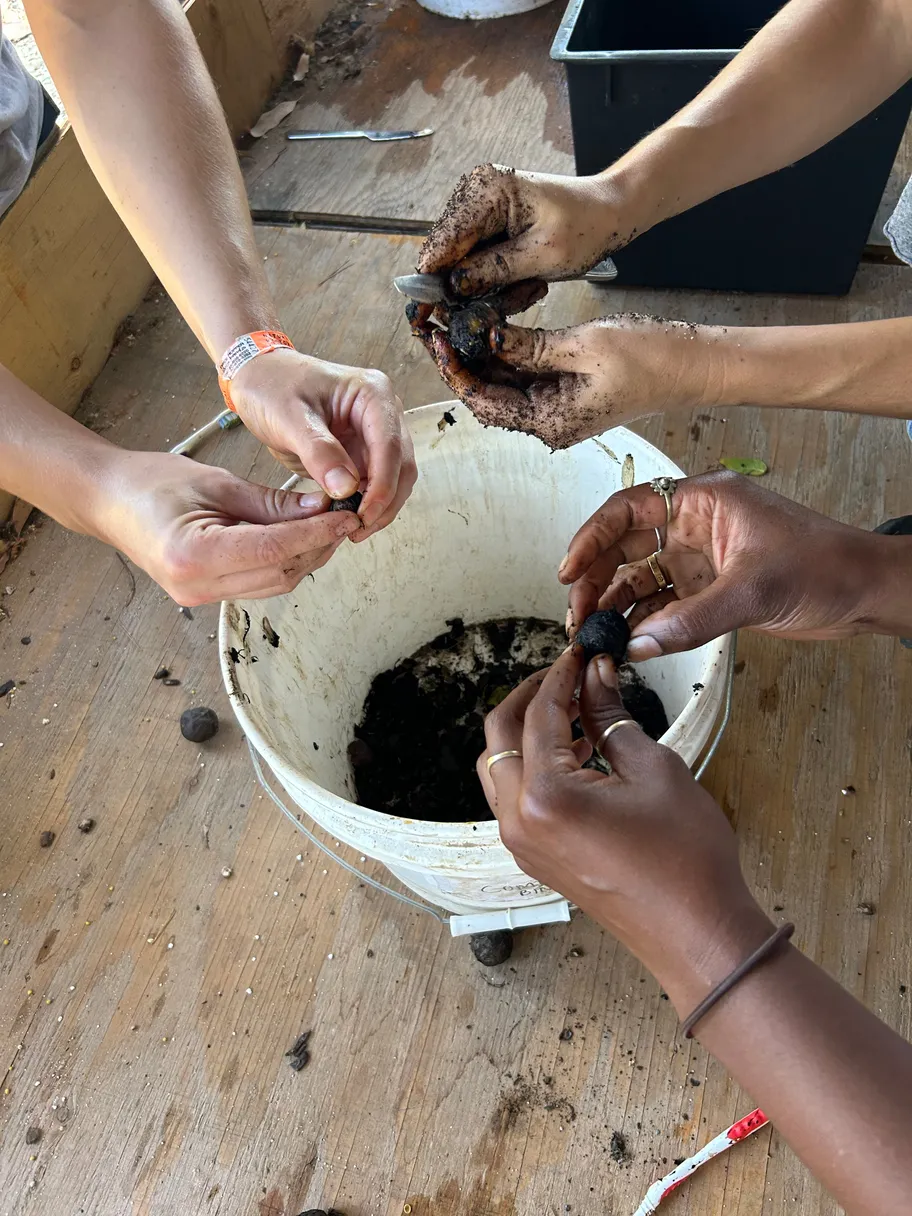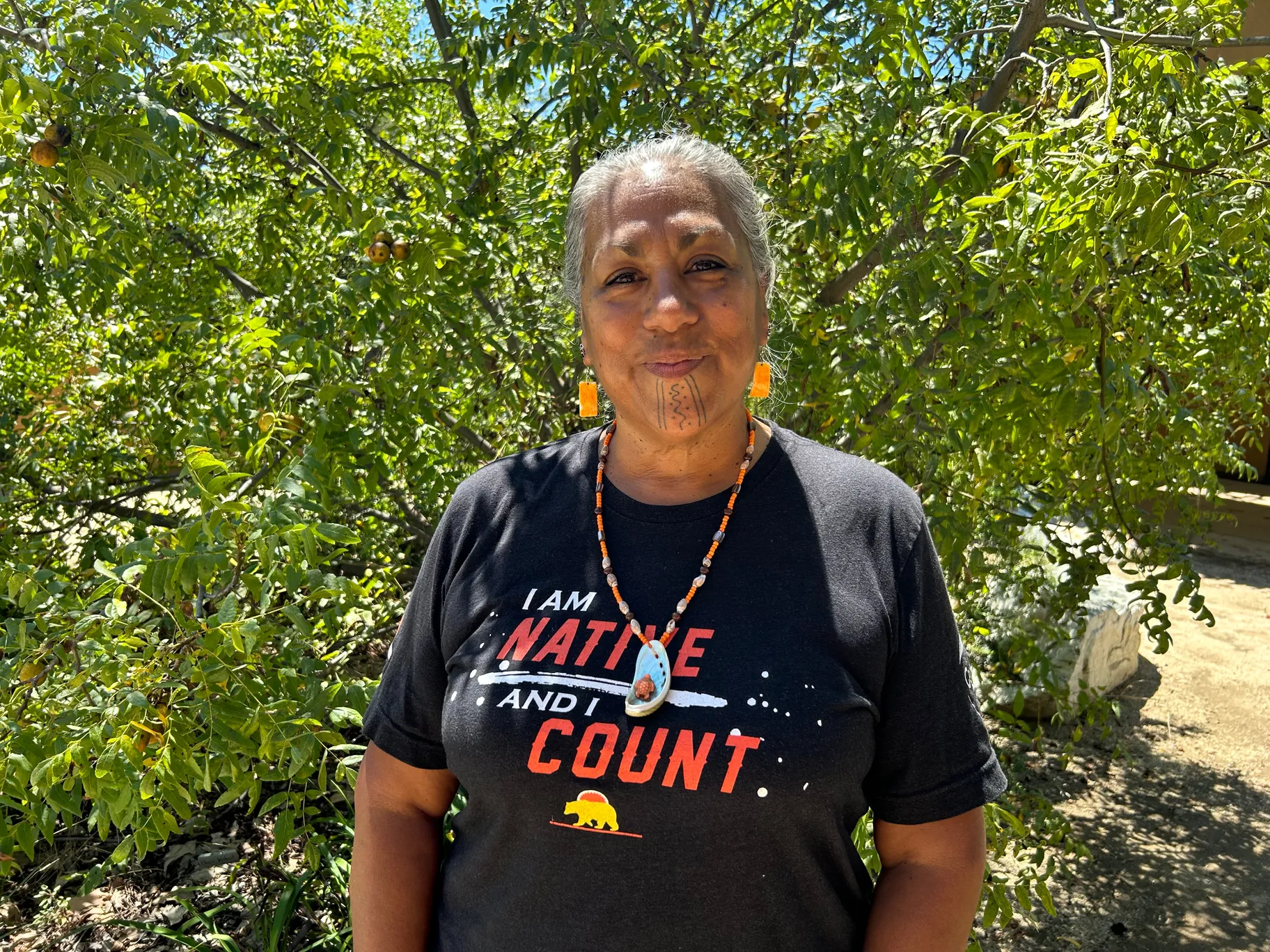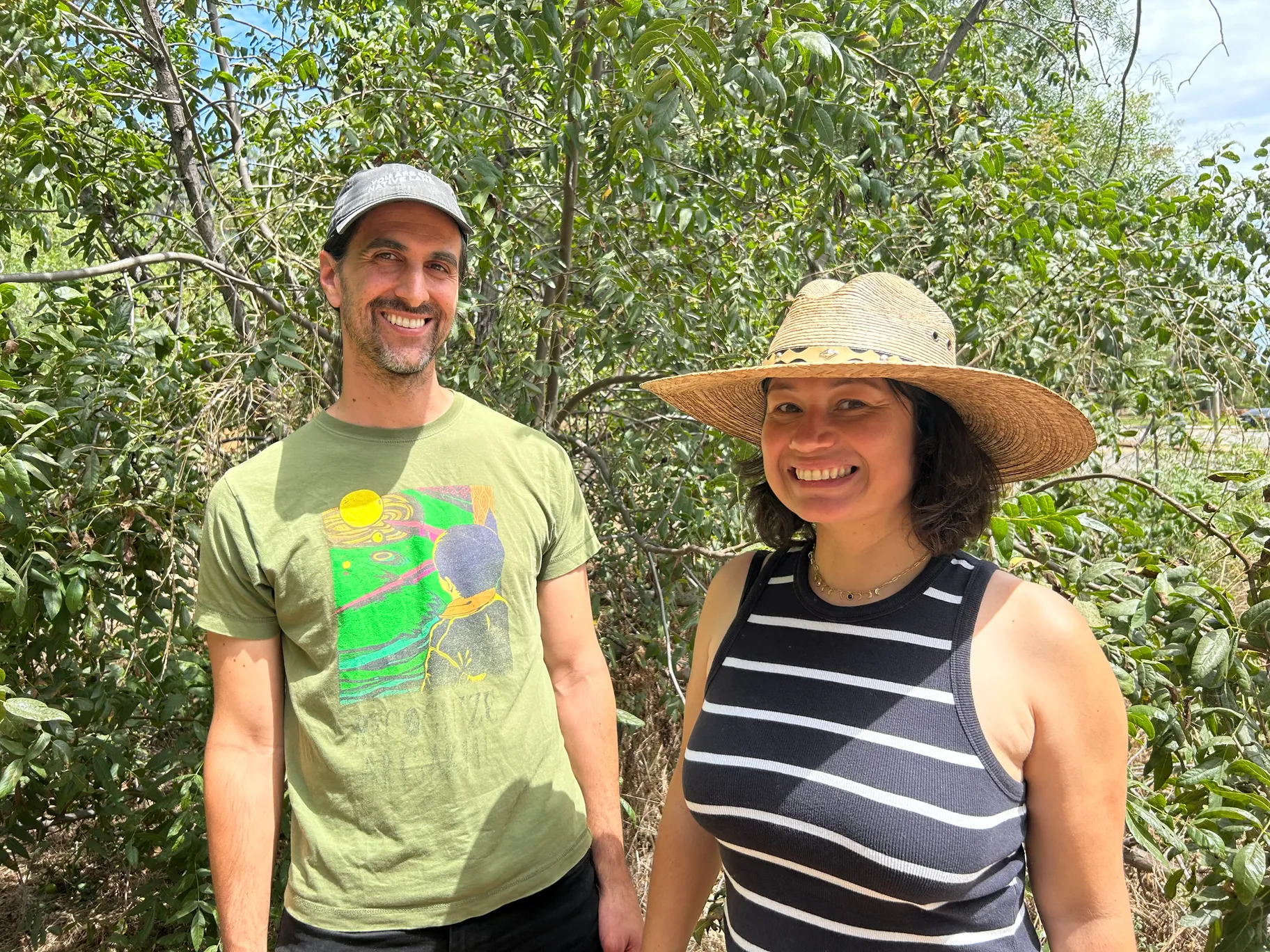If you’ve strolled through the hillsides of Northeast Los Angeles recently — Debs Park, Flat Top, or Ascot Hills, for instance — you might have noticed some scrappy, greenish-yellow trees, with clusters of heavy, black nuts weighing down their branches. These are California’s native black walnuts, and right now, they’re in their peak season.
For centuries, these trees have played a critical role in the local ecosystems and communities of Los Angeles. And on September 17, a coalition of environmental groups will come together to celebrate them, at the second annual Takaape Waashut Northeast LA Black Walnut Day Festival.
The event was launched last year to highlight the black walnut’s significance and to get more people involved in an ongoing struggle to preserve and repopulate it in NELA.
“There's so many intersections with why folks want to support this tree,” says Brenda Contreras, co-founder of the environmental nonprofit Coyotl + Macehualli, which focuses on defending open space in the neighborhood. “The obvious one is environmental reasons, but there's also health reasons, mental wellbeing, safety, housing.”

Volunteers clean black walnuts at a harvest and propagation event in Debs Park. Their dark husks have long been used as a dye by the Gabrielino Tongva people. Photo by Zoie Matthew.
In addition to providing a habitat for nearly 30 species of birds and food for local mammals like squirrels, black walnuts are a critical component of Northeast LA’s tree canopy.
Their nuts have also long been utilized for food, dye, and medicine by local indigenous cultures, says Tina Orduno Calderon, a culture bearer of Gabrielino Tongva, Chumash, and Yoeme descent.
“The black walnut for our people, it's medicine in a way … beyond the wind, beyond the breath of life. All parts of it are really important not only for the humans, but for the animals,” she says.
But in modern times, climate change and development have reduced the trees' native habitat significantly. According to the California Native Plant Society, the black walnut tree is now considered “fairly threatened” in the state of California.

Tina Orduno Calderon stands in front of a black walnut tree at Debs Park. Photo by Zoie Matthew.
Because of this, they’re covered by LA’s Protected Trees and Shrubs Ordinance, which requires developers who want to remove them to apply for a special permit.
However, Micah Haserjian — Contreras’s partner and co-founder — says many are still cut down illegally. And even when developers do apply for the proper permit, there’s no guarantee the black walnuts will be replaced.
“It doesn’t do anything to mitigate the loss of the trees because you can just replace them with another species,” says Haserjian.
But black walnuts are also resilient, he adds. “It can be burned down to the ground pretty much, it can be cut, and it can sprout up to a large size in a short period of time.”
That resilience has transformed the trees into a powerful symbol for many individuals in Northeast LA who have been displaced due to gentrification. It also speaks to the experiences of other marginalized communities, says Contreras.
“That resiliency is emblematic of what we see with Indigenous cultures, and with queer cultures as well,” says Contreras. “We would label [the black walnut] under the umbrella of queer ecology because it has both male and female organs. It starts off as one sex, and then transitions based on what it needs to survive.”

Brenda Contreras and Micah Haserjian stand in front of a black walnut tree at Debs Park. Photo by Zoie Matthew.
This weekend’s festival enables people to gather to honor the trees' resilience, and to directly help reestablish them in their native habitat. The event will include a planting workshop, Tongva black walnut dice game, native plant scavenger hunt, and a chance for attendees to adopt a black walnut tree themselves.
Throughout the rest of black walnut season, Coyotl + Macehualli and other members of the NELA black walnut day committee will also be hosting a series of hikes, harvesting and propagation opportunities, and other black walnut-related events.
Calderon says she’s been happy to see such enthusiasm crop up around protecting these trees — before it’s too late.
“Nature has its way of continuing. It will continue with or without the humans’ help,” she says. “But it's really good that these environmental orgs are stepping up to do this. On these last few hills that are left, [the developers] are cutting them down with disregard … and that's why the humans are stepping in to replant them, so that they can come back.”
